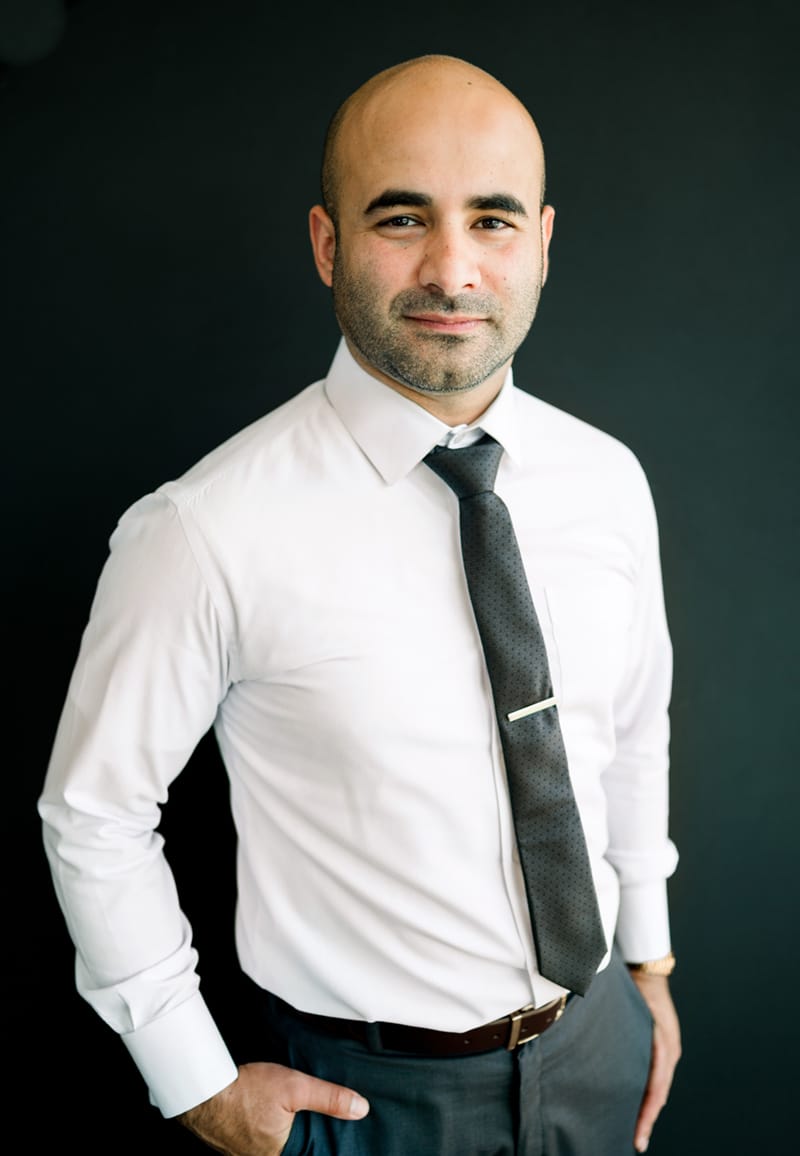Greg DeLeon: Military Engineering to Modular Design
Greg DeLeon, a structural engineer at ISE Structural Engineers in Temecula, California, can tell you not only how large a beam needs to be to support a house, but also how much explosives you’ll need to take it down, thanks to his unique combination of professional and military experience.
After taking classes at Cal State for four years and being close to graduating with a degree in music composition, DeLeon realized that he needed an education that would lead to a career with a living wage. “You have to be really phenomenal to get a good job in music composition, and I was just slightly above average. I knew where I stood in the crowd. I figured I could be slightly average in engineering and still get a decent job.”
He has worked at ISE as a structural design engineer for the past eight years. He teases that his coworkers say he’s only been there for five years, as he has taken significant time away from the office on military service deployments with the Army National Guard. In response to a job ad posted by ISE, he contacted them during an emergency activation where his Army unit was called up to help fight a wildfire in 2016 known as the Soberanes Fire. Despite spotty cell reception and the inability to send his resume, he got the job.
DeLeon is a commissioned officer in the Army National Guard and has been in the service for twelve years. After completing college, he was assigned as a route clearance platoon leader that looks for IEDs. His military training and education was primarily in combat engineering and horizontal construction earth moving. He sees his military experience as “another side of engineering, where I know how to calculate the amount of demolition needed to blow certain things up.”
Today he focuses on designing custom homes and multi-family buildings. While ISE works mainly in California, DeLeon has done some design work outside the state. He has also worked on a couple of public school projects, which necessitate working with the California Division of the State Architect (DSA). DSA provides oversight for K–12 schools, community colleges, and various other state-owned and leased facilities. These projects often require more calculations and back-up documentation than private projects.
‘Modular was a Foreign Concept’

Greg DeLeon, structural engineer at ISE Structural Engineers in Temecula, CA.
A long-term partnership with architect Toby Long in Oakland has resulted in several custom modular home projects, but DeLeon hasn’t always been a fan of modular construction. “I didn’t like modular at first because it was a foreign concept to me. When I first came to ISE I didn’t understand the assemblies.” After being assigned as part of the design team for several of these projects, he is now a fan. “Our team is really good at custom modular houses.”
But they’re still learning, he says. “There’s always stuff to learn. Different factories have their own methods, and as an engineer it behooves me to accommodate those factories. You don’t want to say, ‘I want to do it my way or not at all.’ We try to design it in such a way that it doesn’t affect their process as much. Even though they’re custom houses, we try to do things pretty efficiently in the factory and our team is very sensitive to that.”

The team’s goal is to provide as much coordination up front as possible. “When you have coordination up front, it helps at the end. We do a lot of modular and site-built houses together, like 60% will be modular and 40% site-built.
It gets a bit tricky to connect those pieces sometimes. If you wait to coordinate at the end, you end up doing a lot of fixes, and that takes longer. You spend more hours on a project, and you go over budget.”
In recent years, DeLeon has learned a lot about framing with cold-formed steel, also called light-gauge steel or metal stud framing. “I wasn’t that familiar with it, but I’ve worked on several projects now and want them because that’s a weak muscle of mine.” He’s also expanding his knowledge about post-tension concrete podium construction. “We have engineers in the office that are pretty well versed in building with concrete podiums. I’ve done a couple, but I typically refer back to them for guidance. But it’s something that I’ve gotten better at.”

Internal Drive
DeLeon contributes his success, both in the military and in his profession, to his internal drive to be the best he can be. “I strive to be the best at everything I do. And that’s why I joined the Army too, because I took it as a challenge. I’m competitive, but I try to keep a low profile sometimes.
“You need to have an internal drive just so you can stay competitive and set yourself apart from everyone else. Everyone comes into the engineering field with a degree and an internship, but you need to bring something else to the field, a drive.” His secret to getting ahead is to work longer than anyone else. “If you only work 40 hours a week, you’ll never get anywhere beyond everyone else.”
He also advises newer engineers to read as much as possible, even if it’s not about engineering. “Read something that makes you learn.”
DeLeon has definitely taken his advice to heart, and it shows in his continued success.
About the Author: Dawn Killough is a freelance construction writer with over 25 years of experience working with construction companies, subcontractors and general contractors. Her published work can be found at dkilloughwriter.com.
More from Modular Advantage
AI, Faster Sets, and Automation: The Future of Modular is at World of Modular
While the modular building industry has long known that it can be an effective solution to increase affordable housing, the word is slowly spreading to more mainstream audiences. Three presentations at this year’s World of Modular in Las Vegas hope to provide insight and direction for those seeking a real solution to the crisis.
An Insider’s Guide to the 2025 World of Modular
The Modular Building Institute is bringing its global World of Modular (WOM) event back to Las Vegas, and with it comes some of the industry’s best opportunities for networking, business development, and education. Over the course of the conference’s four days, there will be numerous opportunities for attendees to connect, learn, and leverage event resources to get the most out of the conference.
Affordable Housing Now: The Industry’s Best Bring New Solutions to World of Modular
While the modular building industry has long known that it can be an effective solution to increase affordable housing, the word is slowly spreading to more mainstream audiences. Three presentations at this year’s World of Modular in Las Vegas hope to provide insight and direction for those seeking a real solution to the crisis.
Opportunities for Innovation in Modular Offsite Construction
Modular Offsite Construction has already shattered the myth that it only produces uninspired, box-like designs. Architectural innovations in module geometry, configurations, materials, and products make it possible to create visually stunning buildings without sacrificing functionality or efficiency.
Safe Modular Construction with Aerofilm Air Caster Transport
In collaboration with Aerofilm Systems, Heijmans developed innovative skids using air caster technology for moving modules easily and safely. These pallets are equipped with an auto-flow system, making operation extremely simple.
Miles, Modules, and Memes: Building a Modular Network One Flight at a Time
At the end of the day, social media is just another tool for building connections, and like any other tool, needs to be used skillfully to work properly. Use social media thoughtfully, and it will open doors to real opportunities and relationships you didn’t even see coming.
Falcon Structures: Thinking Inside the Box
Some of Falcon’s latest projects include creating container solutions for New York’s Central Park and an East Coast professional baseball team. More and more, Falcon is shipping out container bathrooms and locker rooms to improve traditionally difficult work environments, like those in oil and gas or construction.
UrbanBloc—From Passion to Industry Leader
UrbanBloc specializes in three main categories or markets – what they call “Phase 0” projects, amenities, and urban infill. Clients are often attracted to shipping containers because from a real estate perspective they are considered an asset. Having the flexibility to move and transport these assets allows owners to respond to different circumstances in a fluid manner that they can’t get with standard construction.
The Hospitality Game-Changer
“Hospitality is about more than just providing a service – it’s about delivering an experience,” says Anthony Halsch, CEO of ROXBOX. “And that’s where containers thrive. They allow us to create spaces that are unique, efficient, and sustainable.”
Container Conversions Counts on Simplicity to Provide Critical Solutions
Container Conversions has fabricated and developed thousands of containers for varied projects, including rental refrigeration options, offices, kitchens, temporary workplace housing, and mobile health clinics.










